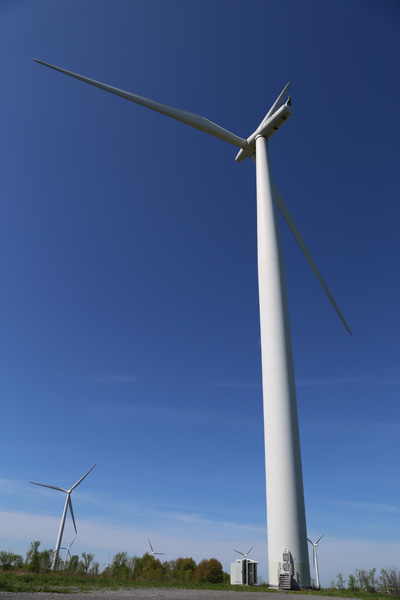
2 May 2024–As wind power becomes a widespread and cost-effective renewable energy source at sites throughout the world, researchers are focusing on the propagation of seismic and acoustic waves that wind-harnessing turbines produce.
At the Seismological Society of America (SSA)’s 2024 Annual Meeting, researchers presented simulations of turbine-driven wave propagation across several frequencies and ground conditions. John Fitzgerald of Queen’s University and colleagues then compared these simulation results with observations from Wolfe Island, Ontario, the site of one of Canada’s first major wind farms.
The seismic signals from wind farms are very small and not likely to be felt by people, but people “can definitely hear and to some extent feel the acoustic signals” from these installations, Fitzgerald said.
“But there isn’t a ton of work that has been done to characterize both the ground motion and acoustic noise of these types of installations,” he explained. “We’re showing that you can do these very large simulations of an entire wind farm, and this could provide important information for planning future wind farm developments.”
Vibrations from wind turbines are likely caused by back-and-forth oscillations of the turbine shaking back and forth during operation, while acoustic waves are likely produced directly in front of the turbine blades. Acoustic waves also can couple with the ground and create complex signals.
As wind farms become increasingly common, it will be important to separate out the background ambient signal of turbines from the signals produced by other sources, like those used for active seismic experiments, Fitzgerald noted.
Fitzgerald and colleagues used the open-source geoscientific software package SPECFEM3D to model ground vibration and acoustic wave propagation ranging in frequency from 1 to 10 hertz across different bedrock and topsoil conditions. The team is mostly looking at low frequency signals, “on the assumption that high-frequency signals would attenuate in the broader environment,” said Fitzgerald.
One of the next steps for the researchers will be to include realistic topography and velocity models in their simulations, since the shape of the landscape would also impact the propagation of ground vibrations and to a lesser extent acoustic waves, Fitzgerald said.
